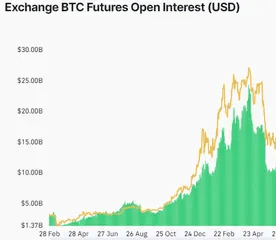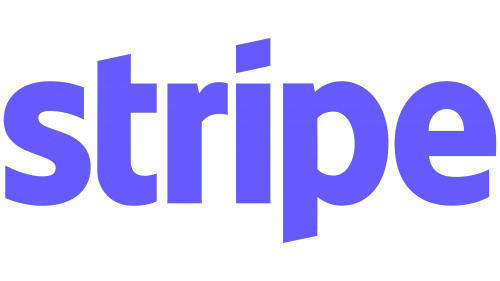OpenAI have created a neural network model that has been dubbed ‘DALL-E’, which is an amalgamation of the iconic artist, Salvador Dali, and Pixar’s WALL-E. This model follows up on GPT-3, a language model compiled by OpenAI as well.
By making use of Natural Language Processing (NLP) and Computer Vision procedures together, this system takes a textual input and results in an image which suits it. For being permitted to detect how to connect terms with aesthetic features, the model was prepared with a huge set of text and images.
What renders DALL-E very remarkable is its capacity to yield finely detailed and complicated images from simple textual outlines. For instance, it can produce pictures that feature animals wearing clothing or objects made from unexpected materials.
DALL-E has the potential to be used in a wide range of applications, from generating images for advertising to helping designers and artists create visual representations of their ideas. However, the technology also raises ethical concerns, particularly around the potential for misuse in creating deepfake images or other types of misinformation.
Introduction
The use of Artificial Intelligence (AI) is increasingly becoming popular and revolutionizing the creative practices of visual disciplines like the arts. OpenAI has developed a Neural Network model known as DALL-E capable of generating images when descriptions are written in natural language. This technology is significantly transforming diverse industries such as advertising, design, and entertainment and signs out the future of bridging image generation with Natural Language Processing (NLP). Moreover, with great potency in power comes prominent responsibility; ethical considerations must be accounted for when using AI-generated imagery.
This article breaks down various aspects surrounding DALL-E in detail. For instance, how it works, a look into its applications and concerns arising from its usage. In addition to this other issues will be discussed such as its pricing models in comparison to other AI image generation tools and finally what potential implications will it have on society at large.
You can easily conclude that DALLE has the potential to completely disrupt existing industries while also opening up numerous possibilities for further innovation. Studies prove that once the current technological trends in NLP and computer vision converge, these advancements will create endless opportunities to creatively push boundaries not just for professionals but also for researchers and designers alike. From an ethical standpoint however, there still remain grey areas which need to be observed more thoroughly prior to integrating said technology in our present day system.

How DALL-E Works
DALL-E is an AI-powered model developed by OpenAI that leverages a combination of natural language processing and computer vision to produce visually appealing depictions based on textual descriptions. The research team behind the system pre-trained it with more than 250 million text-image pairs consisting of both descriptions and corresponding pictures. This allows them to generate images from novel descriptions never encountered before.
To use DALL-E, the user simply inputs a description into the model and then NLP is utilized to break down and transform each word into its core visual elements which are then fed into the generative adversarial network (GAN). This includes extracting characteristics like color, texture and content from words such as “red,” “white,” and “striped.” The GAN consists of two different neural networks – one known as generator creates images based on the provided visual features while another called discriminator assesses these pics for enhancement or corrections for refining output quality.
DALL-E is a cutting-edge deep learning technique which incorporates text processing and computer vision to produce images from textual descriptions. DALL-E goes the extra step in creating pictures that contain more than is explicitly written in the description. This means, for instance, if someone inputs the sentence “a hot air balloon soaring above a mountain range”, DALL-E might also create an image containing other details such as clouds or trees not specified in the initial instructions. That is because it has within it the skill to figure out objects appear in which context and as a result come up with complex images.
The use of this technique is vast – it has multiple applications across many domains. One of its uses may be in advertising, where it can come up with product visuals that do not exist anywhere else. Designers may make use of this technology to quickly ideate visual elements like websites and logos. Additionally, it may also be advantageous while creating virtual reality experiences or video games by generating virtual environments with ease.
To sum up, DALL-E takes advantage of Natural Language Processing along with Computer vision to construct images from verbal scripts. Its effectiveness exceeds making broadly described visuals due to its capacity to recognize context when objects are present, thus forming pictures that simply go beyond what was originally stated in the inputted words. The opportunities for using this innovation are plentiful and extend across many industries such as advertising, design and gaming. In the following section we shall explore several existing applications of DALL-E’s utilization today.

Applications of DALL-E
DALL-E is an innovative technology capable of transforming textual descriptions into visual images, and its applications have tremendous potential across multiple industries. Here are some of the ways that DALL-E has been used so far:
Advertising
DALL-E can be utilised by advertisers to create eye-catching and realistic product images that don’t actually exist in reality. Through this, they can promote their entire range of clothing or other goods while avoiding costly photoshoots. This could help fuel an explosion of new and creative advertising campaigns.
Design
For designers, DALL-E could revolutionise the design process by allowing them to quickly generate a multitude of version of a webpage from textual descriptions. Instead of manually tweaking every detail, designers can use DALL-E to create multiple versions for testing and refinement without making substantial amendments.
Entertainment
In recent times, the emergence of artificial intelligence (AI) has drastically changed the entertainment industry. AI technology such as DALL-E have enabled developers to create virtual environments for games, movies and other virtual reality experiences with incredible realism. For instance, a video game developer might use DALL-E to generate realistic environments and content for a game that is still in development. Through this technology, they can better comprehend game mechanics, mechanics and plot development before the game is even finished. This renders remarkable time saving capabilities which are highly invaluable in modern day society.
Research
With its capability to generate highly accurate content, it is no surprise that DALL-E also holds great potential to be used in research applications. It could help researchers communicate their findings more efficiently by generating realistic images for journals and publications relevant to the research being conducted. Furthermore, it might also prove useful in medical research by creating 3D images of organs, tissue and other biological structures which could likewise aid more efficient communication amongst medical professionals and experts.
Ethical Concerns Surrounding DALL-E
The ability of DALL-E to create convincing images from descriptive words poses a potential risk of misuse in generating deepfakes and other forms of deceitful media. This carries many moral issues including invasion of privacy, lack of authorization, and trustworthiness.
An issue that might arise is the non-consensual production of realistic images of people without their permission, which could result in the infringement their personal seclusion and potentially hurt their reputation. Furthermore, forged photographs that look genuine but are completely fictions may easily lead to the diffusion of untruthful accounts and disingenuous content.
Another dilemma that ought to be considered is the prospect for DALL-E to repeat bad biases and stereotypes if its training data carries biased views or lack proper representation in certain groups. This could have serious consequences on how people are depicted in media as well as spreading offensive practices.
To address these concerns, it is essential to establish ethical guidelines and best practices for the development and use of AI image generation models like DALL-E. This includes ensuring that the training data used is diverse, representative, and free from bias, as well as establishing clear guidelines around consent and privacy when using DALL-E to create images of people.
Overall, while DALL-E presents exciting possibilities for image generation, it is essential to approach its use with caution and ensure that ethical considerations are carefully considered to prevent harm and ensure the responsible use of this technology.
Pricing
AI image generation models have been gaining traction in the tech industry, with OpenAI’s DALL-E being a particularly advanced offering. This AI system is capable of creating hyperrealistic and complex images based on textual input, though few details of its pricing model have been made available.
It is widely assumed that DALL-E’s pricing will be based on the amount of images produced or time spent using the API; compared to other AI image generation models this would be more expensive due to its specialization features, including tailored shapes, textures and colors. Additionally, creating such detailed visuals requires more processing power than less sophisticated models.
The expense associated with DALL-E is expected to primarily affect commercial use due to its complexity. Its price may make access difficult for smaller businesses or individual users who could not match large budget institutions in terms of expenditure power — limiting wider adoption and potential applications of this technology which could prove beneficial for many sectors. It remains unclear however precisely how much it will cost customers when it becomes commercially available.
In order to address this concern, several alternative AI image generation models are available which may provide a more affordable and accessible approach. For example StyleGAN and BigGAN are both open source models that generate high quality images with some customisation options available. While these models aren’t as flexible as DALL-E they still produce suitable results for various applications. Additionally, OpenAI allows users to adjust the level of complexity or realism in their generated images, meaning that different levels of costing can be established depending on customer preferences.
On a larger scale, cost restrictions could limit DALL-E’s accessibility amongst small business owners or even individual users who require its services but cannot afford such premium prices. Companies like OpenAI could potentially introduce different pricing tiers based on customer usage or specific requests to cater towards varying price ranges among customers. This way lower costs can be balanced against production efforts while still providing financially viable access to the image generation toolset offered by DALL-E.
Keeping all this information in mind, it can be concluded that while the exact pricing model adopted by OpenAI remains unknown, it is likely they will offer a premium product aimed at commercial usage which may not be affordable or accessible to smaller businesses and individual users who simply cannot afford it. Nevertheless, alternatives such as StyleGAN or BigGAN can still produce good quality images at a much lower price point making them an attractive option for those looking for an effective solution within smaller budgets. Additionally, it is possible OpenAI may choose to provide different pricing tiers based on the level of customization required when using DALL-E which would allow more people access to their brand new technology without breaking the bank balance .
The Future of DALL-E and AI Image Generation
The recent advancements in AI technology have caused a wave of transformation across many industries. DALL-E is no exception, as the AI image generation model has impressive capabilities and tremendous potential to change the way creative projects are approached. With its ability to generate custom images and graphics, DALL-E could speed up the process for creating marketing materials, product designs and mockups. The medical field too could benefit from this technology; 3D models of organs and tissue generated with DALL-E could be used for surgery planning or training AI models for diagnosis.
Nevertheless, difficulties arise when such powerful tools are available for anyone to use, as this might lead to misuses such as deepfake images or information spreading false information. Fake images of politicians or celebrities that can manipulate public perceptions were a mere example. Therefore, it is important to ensure well thought out policies to regulate the use of image generation models like DALL-E so that they work only properly when their implications are known beforehand.
AI image generation has engrossed researchers from various fields due to its versatility and vast possibilities it offers. Considering these benefits, deliberate efforts still have to be made in order to accurately assess opportunities and risks that come with technologies like DALL-E. The development of systems that challenge malicious content online is necessary in order not to jeopardize the trustworthiness of trustworthy sources or worse – affect political results influenced by fake news enabled by artificial intelligence manipulation methods such as deepfakes created by algorithms created by models like DALL-E. Nonetheless, if such efforts are put into place alongside safe guard regulations, digital economies can benefit immensely from intelligent image generation powered by AI while preserving the fundamental values we strive for – authenticity and accountability.
As this technology continues to progress, ethical guidelines for its use must be established to ensure responsible practices.
Transparency is key among these ethics, as AI-generated images can oftentimes appear indistinguishable from real-life photographs. To address this concern, methods need to be developed that allow users to verify authenticity and detect any deception. This can be done through providing education and training on the use of AI tools like DALL-E, as well as developing automated checks that single out deceiving imagery presented as factually accurate.
Overall, AI tools have the potential to completely transform our jobs markets; robotic capabilities could take over human labour in creative fields such as graphic design or marketing. To counteract possible displacement of workers due to automation, investment in educational programs should be made so current and future generations can learn new skills necessary for the constantly evolving world of work. Through such initiatives unemployed individuals may find a route into further employment opportunities; maintenance roles themselves may arise within using AI image generation technology that keep it up-to-date in real time with industry trends & developments.
In summary, DALL-E is an exciting new development for the advancement of AI and shows great promise for its various applications across many aspects of life. It is important however that legal parameters are formed so its uses remain ethical and restricted when necessary while also allowing people access who would normally not have it due economic & educational barriers. Simultaneously preparing current generations & introducing future generations into this innovative field offers an opportunity for personal growth alongside technology’s development – an inviting combination uniting those bettering their lives with those bettering breakthroughs.












